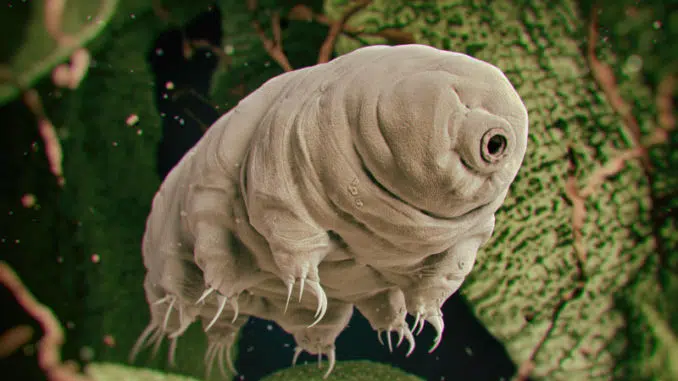
Always try to crush it, freeze it or even send it into space, the tardigrade will surprise you with its ability to survive in extreme environments.
Superman can store his tights!

The tardigrade also called a water bear, is a small animal with characteristics close to the insect, without being part of this family. It looks like a plump caterpillar that wanders slowly on eight legs, provided with claws. This strange animal is a tiny translucent invertebrate (0.1 to 1.5 mm), protected by a shell.

Invertebrate
Any animal that does not have a spine.
Like insects, it lays eggs, has a head, eyes, a nervous system and a digestive tract that runs throughout its body.
The tardigrade lives almost everywhere on the surface of the globe, from the highest peaks of the Himalayas to the depths of the oceans, in forests and in your homes, preferably in humid environments.
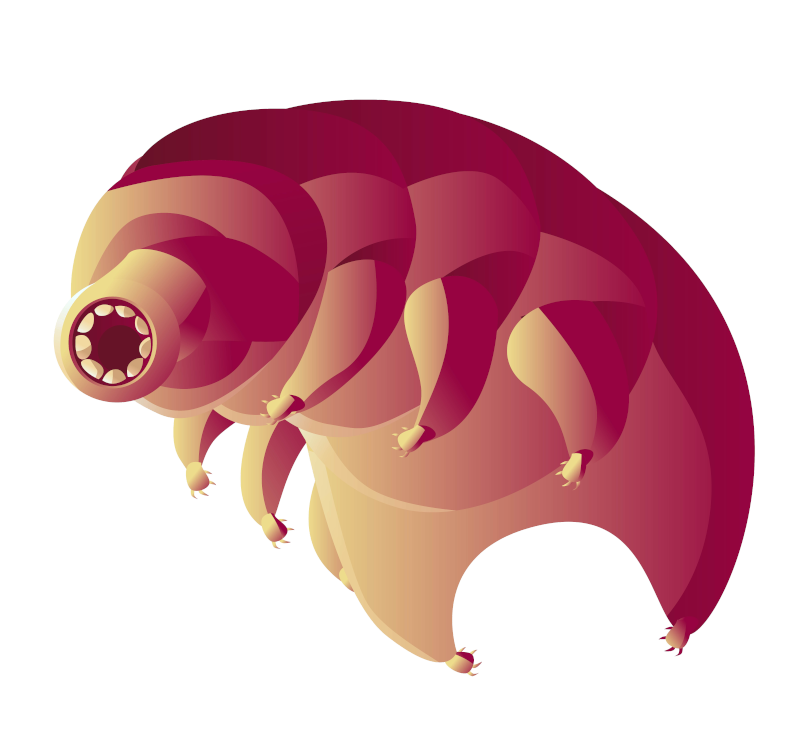
The tardigrade superpowers
What surprises researchers the most are its extraordinary resistance capacities in extreme environments. Conditions that would be fatal for us human beings. This feat he owes to cryptobiosis. That is the fact that an organism becomes completely inactive, and where the individual is almost indestructible and immortal.
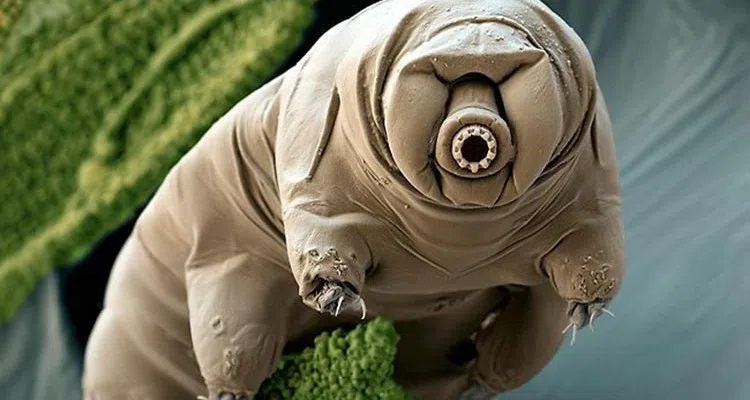
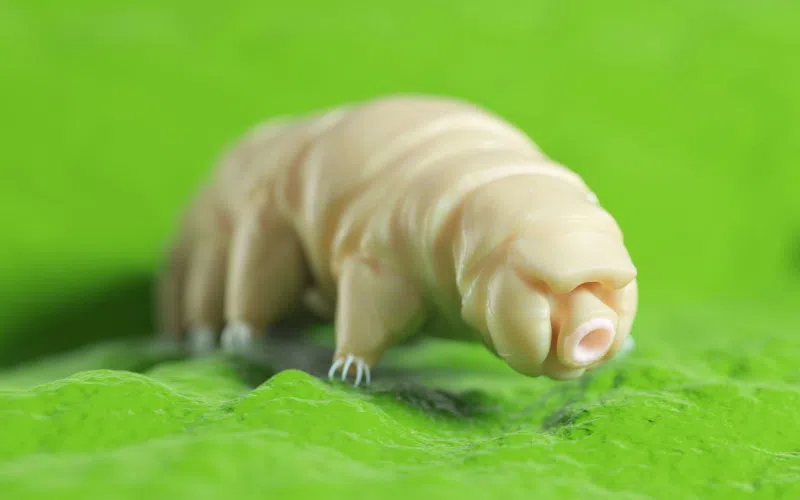
Let's list the tardigrade superpowers
- This tiny baby is able to withstand the lowest temperatures, down to – 459 ° F (close to zero Kelvin, the temperature in space) for a few minutes. It does this by using sugar, called trehalose, a kind of antifreeze it uses to replace the water in its body.
- You can cook it in boiling water, it will go for a leisurely ride once it is removed from the pan.
- You can starve it of food and water for 30 years, dehydrate it up to 3%, it will be reborn when rehydrated.
- It also supports pressures 1200 times higher than the pressure on Earth.
- It supports 1000 times better irradiations than any other animal, the famous gamma rays, highly dangerous! It thus supports up to 6200 Gy for hydrated animals while the lethal dose for humans is between 5 and 10 Gy.
The tardigrade in space

But that’s not all ! What fascinates researchers is also its ability to survive in space. In 2007, a spacecraft took a few tardigrades out for an altitude of 167.8 km. After these 10 days of vacation in the sun in space, these dear critters came back alive and able to reproduce.
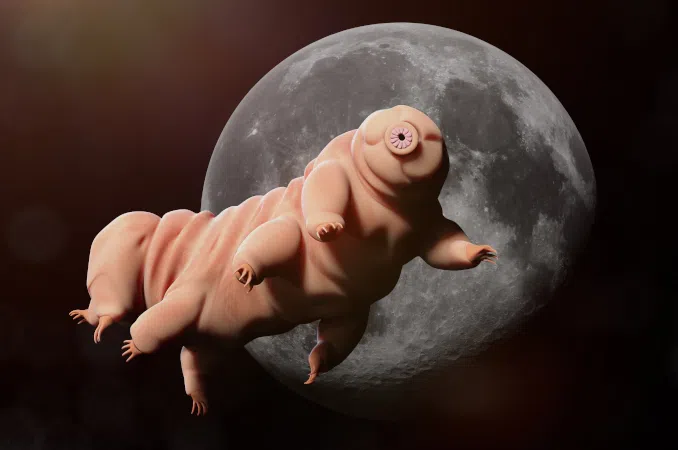

A source of inspiration for research
Much more than the Green Lantern ring, or the oversized strength of the Hulk, tardigrade inspires researchers. Indeed, following its stay in space, the small animal did not return unscathed. Ultraviolet rays (UVs), 1000 times the intensity on Earth, damaged the animal’s DNA. However, they also found that the small animal produced proteins capable of self-repair!
This opens up interesting perspectives in cancer research, where this protein could repair the DNA of healthy cells that are damaged when anti-cancer agents kill sick cells.
So it may be that one day we can regenerate like Wolverine, and without an adamantium-reinforced skeleton.

